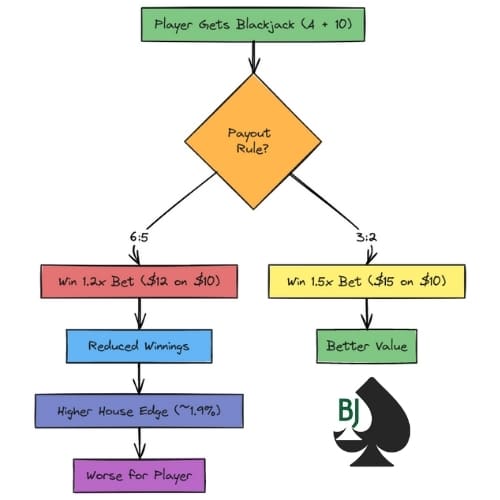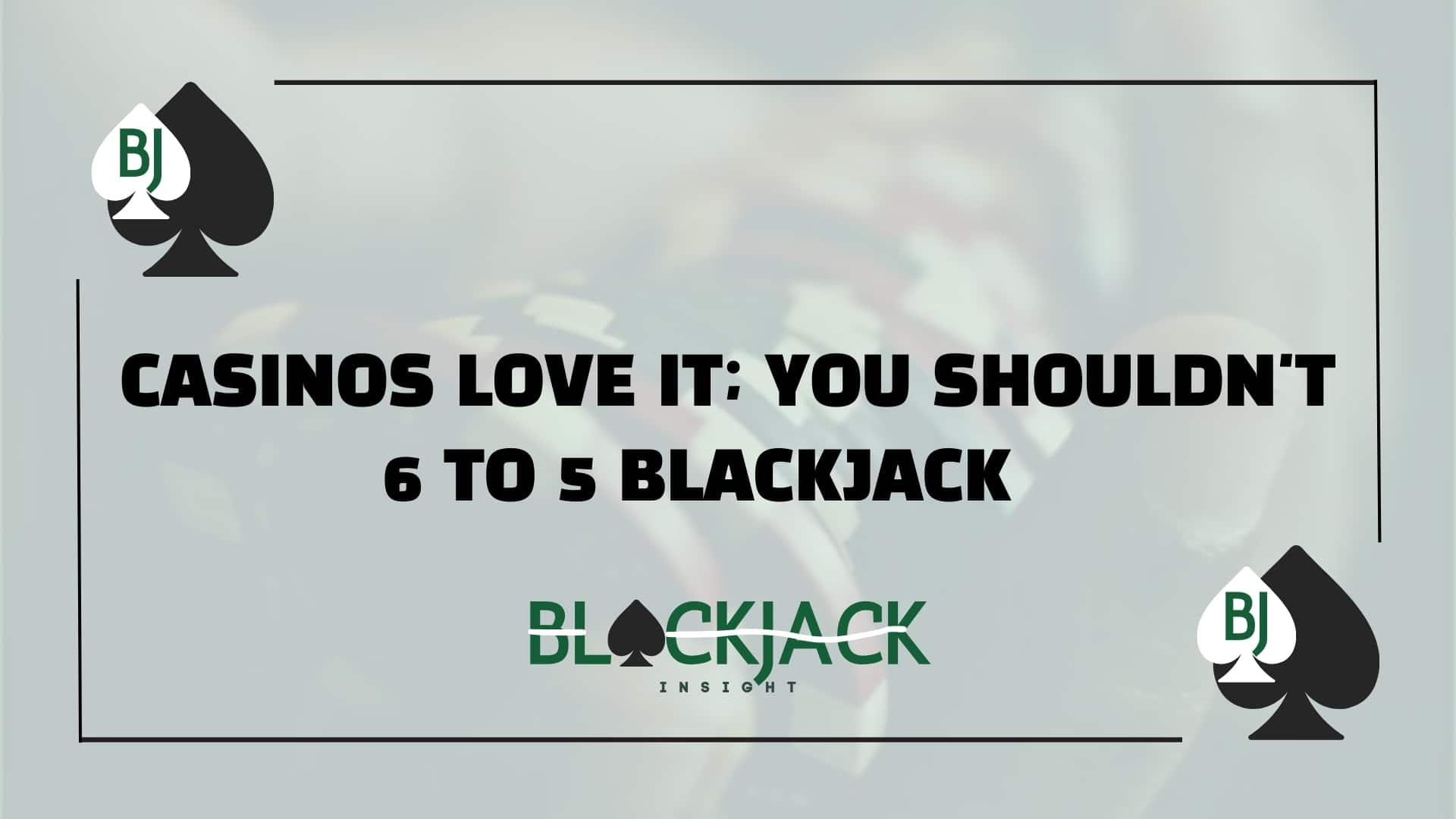Casinos Love It; You Shouldn’t: 6 to 5 Blackjack
Table Of Content
Blackjack 6 to 5 payouts might sound like just another boring rule in a casino — but trust me, if you actually care about keeping your bankroll alive, this is something you absolutely need to understand.
Because here’s the thing: not all blackjack tables are created equal. And if you sit down at a 6 to 5 game without realizing what’s going on, you’re basically handing the casino extra money every time you hit blackjack.
I’ve seen it happen more times than I can count — players celebrating their blackjack win, only to get paid less than they expected. And by then? It’s already too late.
What Does “6 to 5” Mean in Blackjack?
Let’s break it down real simple.
Normally, when you hit blackjack (an ace plus a 10-value card), a fair table should pay you 3 to 2. So, a $10 bet wins $15.
But in 6 to 5 blackjack, that same blackjack only pays you $12 on a $10 bet.
That’s it. That’s the scam — hiding in plain sight.
And while $3 might not seem like a big deal for one hand, multiply that across a few hours of play… or worse, across a weekend in Vegas? That’s a lot of money left on the felt.
That “minor” reduction from $15 to $12 can increase the house edge substantially. If you’re aiming for maximum returns, it’s essential to understand this difference—otherwise, you might unknowingly put yourself at a hefty disadvantage.
Download Blackjack 6 to 5 Chart

Blackjack 6 to 5 Versus 3 to 2
Here’s where it gets real sneaky.
Most casual players don’t even notice the difference between 3 to 2 and 6 to 5 blackjack payouts — because the game itself looks exactly the same. The cards are the same. The rules look the same.
But financially? It’s night and day.
See, with a standard 3 to 2 payout, the house edge on blackjack (assuming you play correct basic strategy) sits around 0.5%. That’s about as player-friendly as a casino game gets.
Switch that to a 6 to 5 payout, though? Suddenly the house edge jumps closer to 1.5%. Sometimes higher, depending on other rules at the table.
Think that doesn’t matter? It absolutely does — especially if you’re playing for hours or betting bigger amounts.
The Long-Term Impact of 6 to 5 Blackjack Pays
Let’s say you’re betting $10 a hand and hit blackjack once every 21 hands (which is about the long-term average).
At 3 to 2 payout? You’re making $15 every blackjack.
At 6 to 5 payout? Just $12.
That’s a $3 loss every time. Doesn’t seem like much? After 100 blackjacks, that’s $300 missing from your bankroll.
It’s death by a thousand cuts — and the casinos know it.
Why Is 6 to 5 Blackjack Everywhere Now?
Easy answer: casinos love easy money.
Over the past few years, blackjack 6 to 5 tables have spread like wildfire, especially in tourist-heavy areas like the Las Vegas Strip. Why? Because most beginners look for low minimum bets — and casinos figured out they could offer $5 or $10 tables… if they just paid out blackjacks worse.
It’s brilliant from their side. And brutal from ours.
That’s why if you want to avoid these tables, you really have to look hard. Sometimes you’ll find good old-fashioned 3 to 2 payouts tucked away in high-limit rooms or off-strip casinos — but on the main floor? Watch your step.
6 to 5 Blackjack Payouts Hurt Online Players Too
And no— online blackjack isn’t safe either.
Many online casinos love throwing in 6 to 5 payout rules on their lower-stakes blackjack games, assuming casual players won’t notice. And honestly? They’re right a lot of the time.
I’ve seen online tables where the only sign of the 6 to 5 rule is a tiny line buried in the help section. No pop-ups. No warnings. Just a quiet little tweak that slowly eats into your winnings.
That’s why I always say, whether you’re playing online or live, check the payout rules before you sit down or click “deal.” If it says Blackjack Pays 6 to 5, just back out. There are better games out there.
Common Misconceptions About 6 to 5 Blackjack
“It’s Only a Few Dollars Less”
Over multiple blackjacks, those few dollars stack up quickly.
“Other Rules Must Compensate”
I used to think maybe DAS (Double After Split) or late surrender would balance it out. But usually, the lower payout more than negates any slight advantage from those rules.
“Single-Deck Games Are Always Better”
Not necessarily. A single-deck 6:5 table can be far worse than a multi-deck 3:2 table.
Tips for Avoiding 6 to 5 Pitfalls
- Check the Table Sign: Always confirm the payout ratio before you place a bet. I’ve personally jumped into a busy table, only to realize mid-game that blackjacks were paying out less.
- Don’t Assume Single-Deck Is Better: As mentioned, single-deck + 6:5 can be worse than multi-deck + 3:2.
- Be Patient: If all the 3:2 tables are full, it might be worth waiting or checking another section of the casino.
- Stick to Basic Strategy: If you must play 6:5, at least keep the rest of your game strong to mitigate some of the disadvantage.
FAQs
1. Can I negotiate a 3:2 payout at a 6:5 table?
Almost never. House rules are typically set; only high rollers in private games might get special conditions.
2. Is it better to leave rather than play 6:5?
Mathematically, yes, if you can find a 3:2 game somewhere else. But if you’re just having casual fun, that’s your call.
3. Why do some players still play 6:5?
Convenience, lack of awareness, or maybe they’re just not concerned with the math. Also, some players love single-deck “feel.”



